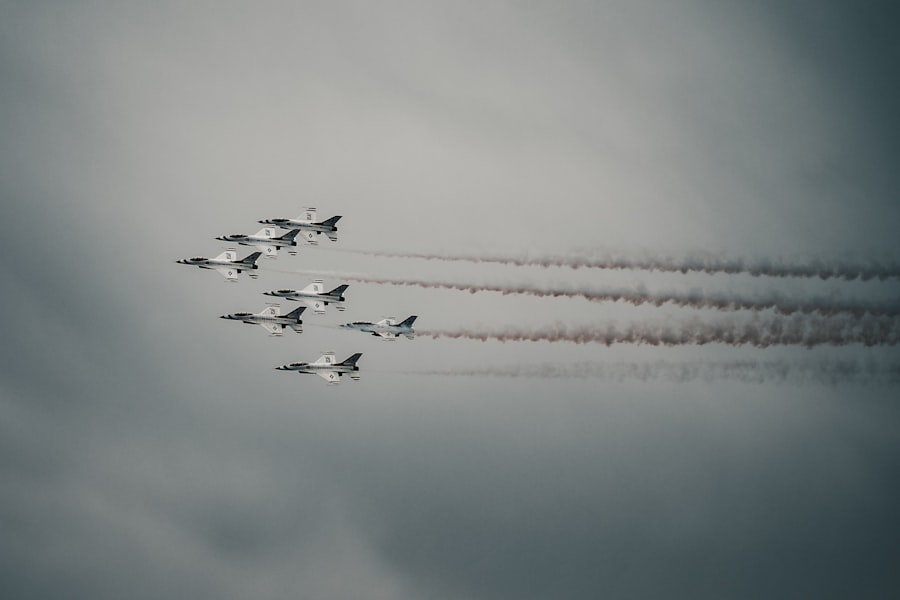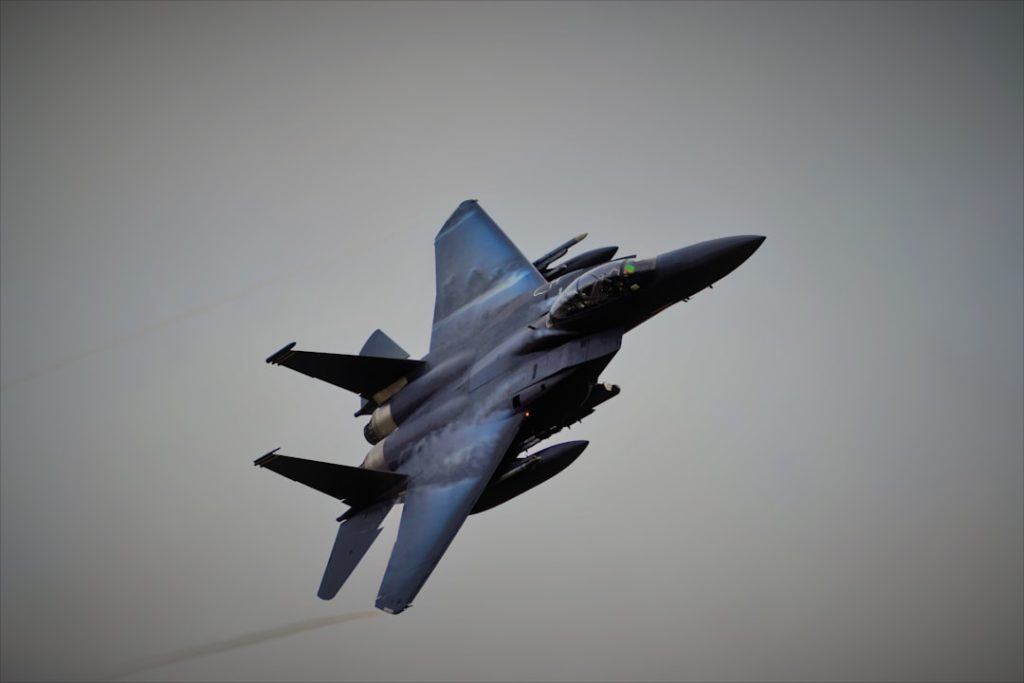The F-14 Tomcat, a twin-engine, variable-sweep wing fighter aircraft, has become an iconic symbol of naval aviation since its introduction in the 1970s. Developed by Grumman Aircraft Engineering Corporation, the F-14 was designed to serve as a multi-role fighter capable of engaging enemy aircraft, providing air superiority, and conducting ground attack missions. Its distinctive design, characterized by its variable-sweep wings that could be adjusted during flight, allowed the F-14 to excel in a variety of combat scenarios.
The aircraft’s agility and speed made it a formidable opponent in dogfights, while its advanced avionics and weapon systems ensured it could effectively engage targets at long ranges. The F-14’s operational history is marked by its service with the United States Navy and its deployment in various conflicts around the globe. It was not only a technological marvel of its time but also a cultural icon, featured prominently in films and television shows, most notably in “Top Gun.” The aircraft’s combination of performance, versatility, and striking appearance captured the imagination of aviation enthusiasts and the general public alike.
As we delve deeper into the F-14’s history, development, and legacy, we will uncover the factors that contributed to its status as one of the most celebrated fighter jets in aviation history.
Key Takeaways
- The F-14 Fighter Jet was a versatile and powerful aircraft used by the US Navy.
- The F-14 was developed in the late 1960s and played a crucial role during the Cold War and Gulf War.
- With its twin engines and variable-sweep wings, the F-14 had exceptional power and performance capabilities.
- The F-14 was equipped with advanced weapon systems such as the AIM-54 Phoenix missile and the M61 Vulcan cannon.
- The F-14 played a significant role in combat missions, including air superiority, fleet defense, and precision strike missions.
History and Development of the F-14
The origins of the F-14 can be traced back to the late 1960s when the U.S. Navy recognized the need for a new air superiority fighter to replace the aging F-4 Phantom
The Navy sought an aircraft that could not only intercept enemy bombers but also engage in dogfights with enemy fighters. In response to this requirement, Grumman began developing the F-14 under the Naval Fighter Experimental (VFX) program. The design process emphasized versatility, with features that would allow the aircraft to perform both fleet defense and ground attack missions.

The first prototype of the F-14 took to the skies on December 21, 1970. Its variable-sweep wing design was revolutionary, allowing pilots to adjust the wing configuration for optimal performance at various speeds. This feature provided the F-14 with exceptional maneuverability at both high and low speeds, making it a versatile platform for a range of combat scenarios.
After extensive testing and evaluation, the F-14 was officially introduced into service with the U.S. Navy in 1974. Over the years, several variants of the F-14 were developed, including the F-14A, F-14B, and F-14D, each incorporating advancements in avionics, engines, and weapon systems.
Power and Performance of the F-14
| Aspect | Metric |
|---|---|
| Maximum Speed | 1,544 mph (2,485 km/h) |
| Thrust | 27,000 lbf (120 kN) per engine |
| Range | 1,600 mi (2,574 km) |
| Service Ceiling | 50,000 ft (15,000 m) |
| Rate of Climb | 45,000 ft/min (229 m/s) |
The F-14 is powered by two Pratt & Whitney TF30 turbofan engines, which provide it with impressive thrust and speed capabilities. The aircraft can reach speeds exceeding Mach 2.3, allowing it to intercept fast-moving targets effectively. The variable-sweep wing design enhances its performance across a wide range of flight conditions; wings can be swept back for high-speed flight or extended for improved lift during takeoff and landing.
This adaptability is crucial for naval operations where aircraft must operate from aircraft carriers under varying conditions. In terms of maneuverability, the F-14 is renowned for its agility in dogfights. Its design allows for tight turns and rapid changes in direction, making it a challenging adversary for enemy fighters.
The aircraft’s advanced flight control system further enhances its handling characteristics, enabling pilots to execute complex maneuvers with precision. Additionally, the F-14’s ability to operate at high altitudes and its impressive range make it suitable for long-range missions over vast oceanic expanses.
Advanced Weapon Systems of the F-14
One of the defining features of the F-14 is its sophisticated weapon systems, which were designed to ensure air superiority in combat scenarios. The aircraft is equipped with an array of armaments that can be tailored to specific mission requirements. The primary air-to-air weapon used by the F-14 is the AIM-54 Phoenix missile, a long-range missile capable of engaging multiple targets simultaneously.
This missile system was revolutionary at the time of its introduction and allowed the F-14 to engage enemy aircraft from distances well beyond visual range. In addition to the AIM-54 Phoenix, the F-14 can carry a variety of other munitions, including AIM-7 Sparrow missiles for medium-range engagements and AIM-9 Sidewinder missiles for close-range dogfighting. The aircraft is also capable of delivering precision-guided munitions for ground attack missions, including laser-guided bombs and GPS-guided munitions.
This versatility in armament allows the F-14 to adapt to different combat scenarios, whether engaging enemy fighters or providing support for ground troops.
Role of the F-14 in Combat Missions

Throughout its operational history, the F-14 has played a crucial role in numerous combat missions around the world. Its first significant deployment occurred during the Iranian Revolution in 1979 when several F-14s were sold to Iran before relations between the two countries soured. These aircraft were used extensively by the Iranian Air Force during the Iran-Iraq War, showcasing their capabilities in air-to-air combat.
In U.S. Navy service, the F-14 saw action during conflicts such as Operation Desert Storm in 1991 and Operation Enduring Freedom in Afghanistan post-9/11. During these operations, F-14s were tasked with various roles, including air superiority missions, ground attack operations, and reconnaissance flights.
Their ability to engage enemy aircraft while providing support for ground forces made them invaluable assets in modern warfare.
Notable Achievements of the F-14
The F-14’s legacy is marked by numerous notable achievements that underscore its effectiveness as a fighter jet. One of its most significant accomplishments occurred during Operation Desert Storm when F-14s achieved an impressive air-to-air kill ratio against Iraqi aircraft. The Tomcat’s combination of advanced radar systems and long-range missiles allowed it to dominate the skies over Iraq, contributing to coalition air superiority.
Another remarkable achievement was during its service with the U.S. Navy’s Fighter Squadron 41 (VF-41), known as “Black Aces.” This squadron became famous for its successful engagements against enemy aircraft during various conflicts throughout the 1980s and 1990s. The pilots of VF-41 demonstrated exceptional skill and tactics while flying the F-14, solidifying its reputation as one of the premier fighter jets of its time.
Legacy of the F-14 Fighter Jet
The legacy of the F-14 extends beyond its impressive combat record; it has left an indelible mark on naval aviation and military history. Its innovative design and advanced technology set new standards for future fighter aircraft development. The variable-sweep wing concept pioneered by Grumman influenced subsequent designs, leading to advancements in aerodynamics and performance across various military platforms.
Moreover, the cultural impact of the F-14 cannot be overstated. Its portrayal in popular media has contributed to its status as an aviation icon. Films like “Top Gun” not only showcased its capabilities but also inspired a generation of aviation enthusiasts and future pilots.
The Tomcat’s sleek lines and powerful presence have made it a favorite among aviation aficionados worldwide.
The End of an Era for the F-14
As we reflect on the storied history of the F-14 Tomcat, it becomes clear that this remarkable fighter jet has played a pivotal role in shaping modern naval aviation. Its combination of power, performance, and versatility has made it a beloved aircraft among pilots and aviation enthusiasts alike. However, as technology continues to evolve and new generations of fighter jets emerge, the era of the F-14 has come to an end.
The retirement of the F-14 from active service marks not just the conclusion of an operational chapter but also a transition towards newer platforms like the F/A-18 Super Hornet and future stealth fighters such as the F-35 Lightning


